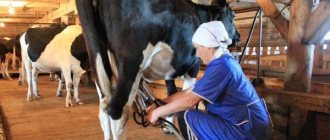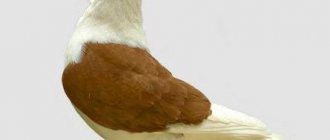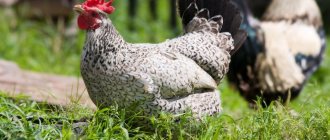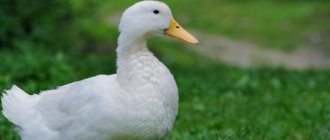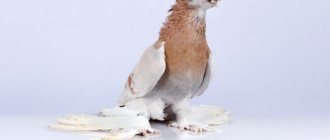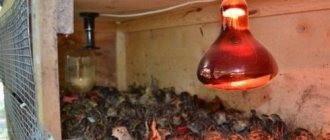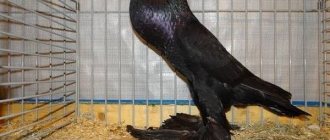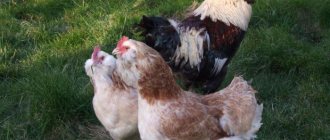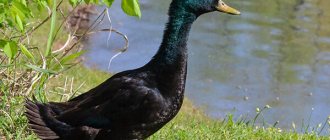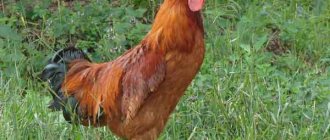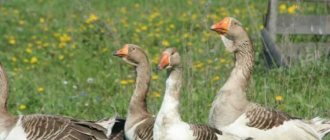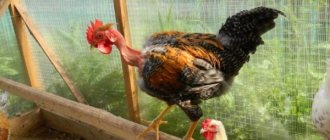Siberian white guinea fowl are birds distinguished by their attractive appearance, excellent productive performance, and ease of care. It is believed that breeding this breed on your own property is a profitable and at the same time exciting business. The article discusses the characteristics of the breed and breeding requirements.
Origin of the breed
The name of the breed itself “speaks” that the bird’s homeland is Siberia. A bird appeared in the city of Omsk. Initially, in Russia, birds were considered decorative animals, the meat of which was not used for food because of its dark color. In addition, the egg productivity of guinea fowl was much lower than that of chickens. For this reason, it was completely unprofitable to breed these birds.
After World War II, several scientific institutes decided to breed Siberian white guinea fowl, including the All-Union Poultry Research Institute, the Institute of General Genetics of the USSR Academy of Sciences, the Siberian Scientific and Technical Institute, and the Siberian Research Institute of Agriculture. Scientists wanted to get a breed with light skin and high productive qualities. Some of them managed to solve this problem.
The light shade of guinea fowl was recessive, that is, it did not appear when crossed with other individuals of the usual color. To consolidate it, it was necessary to do long and painstaking work, during which birds that appeared as a result of a natural mutation with a delicate creamy white hue were used for crossing. The breed was officially registered in 1978.
Breed Features
As mentioned above, the color of the carcass is light, which simplifies their implementation.
This bird has a strong immune system and gets sick much less often than birds that are traditionally bred on our farms. The size of the eggs is small compared to chicken eggs, but they can be stored for quite a long time due to the thick, dark-colored shell.
Guinea fowl of this breed are excellent orderlies and eagerly eat various pests and parasites, not disdaining even the Colorado potato beetle.
In some farms they are bred specifically to combat pests that affect gardens and vegetable gardens.
Description and characteristics of the bird
Siberian white guinea fowl differ from their gray-speckled relatives not only in the color of their plumage. They have very light, pink-tinged paws and skin. Birds are considered to be albinos in a sense.
The birds have a small white head interspersed with a blue tint. Under the chin there is a purple sac (“beard”). The earrings of guinea fowl are large, dense and fleshy, pale pink in color. The head is supported on a long, poorly feathered neck. A distinctive feature is the gray, small beak, slightly curved down at the tip.
The massive body is located on short legs with pale metatarsals. The body is elongated, reaches 45-50 centimeters in length. The chest is muscular and well developed. The back smoothly turns into a short, featureless tail, hanging down. The Siberian guinea fowl has small wings that lie close to the body.
External signs
By the name it is already easy to judge the appearance of the Siberian guinea fowl. The bird's body is covered with pure white plumage. The color is not shiny, but slightly matte. Spots of bright white are visible throughout the plumage. They resemble the discolored pattern of a grey-speckled guinea fowl.
Important! The Siberian guinea fowl retains its lush plumage all summer.
Other external signs:
- The small head is covered with rough skin. On the top of the head there is a horn-shaped growth of dull pink color. The earrings are fleshy, bright pink in males, and pale in females. A small beard hangs under the beak.
- The beak is short but powerful. The tip is slightly bent down. The color of the beak is gray-yellow, sometimes pinkish.
- The neck is elongated, the plumage in this area is sparse.
- The physique is large. The length of the body reaches 50 cm. The back and tail form a single plane. The chest is wide, in females it is larger.
- The paws are short but thick. The skin is pink.
- The short tail ends with downward-curved feathers.
- Wings of medium size. The ends of the outer flight feathers are adjacent to the base of the tail when the bird presses them tightly to the body.
It is easier to distinguish a female from a male by its shorter neck length, but enlarged muscular chest.
Productive qualities
The Siberian white guinea fowl has good productive performance. It is especially famous for its high egg production, because it is more than 25% larger than the number of laid eggs of other breeds that are bred in our country. Birds not only grow quickly, but also gain weight rapidly.
One female lays about 80-90, sometimes 100 eggs weighing 50 grams per year. The fertilization rate of eggs is 75-90%. The weak point of the breed is the high mortality rate among chicks, it reaches up to 47%.
The weight of an adult bird varies within 2 kilograms. At 2.5 months, a young guinea fowl weighs about 900 grams. During this time, she feeds on food, consuming a little more than 3 kilos.
The Siberian guinea fowl has tasty, nutritious and tender meat. A guinea fowl carcass contains 10-15% more meat than a chicken carcass. Guinea fowl meat contains a minimum of fat and a maximum of iron, the deficiency of which reduces the level of hemoglobin in the blood.
Advantages and disadvantages
Advantages of Zagorsk white-breasted dogs:
- high productive indicators: the farmer is provided with large eggs throughout the year;
- rapid weight gain - by 70 days of age, weight reaches 1 kg;
- high indicators of economic efficiency: costs are 3 kg of feed per 1 kg of live weight gain;
- high percentage of hatching eggs;
- rarely get sick and are not susceptible to common “chicken” diseases;
- tolerate low temperatures well;
- good at destroying pests.
Flaws:
- can rush anywhere;
- unstable to stress and fearful.
Character and lifestyle
Siberian guinea fowl are non-conflict animals. Most breeders note the positive quality of Siberian guinea fowls - a calm and balanced disposition. These birds are able to get along with other breeds and establish contact with all the inhabitants of the house.
Farmers note the main drawback of the bird - its excessive timidity. Guinea fowl often react to extraneous noises and strangers - they begin to scream and behave hysterically. Animals take a long time to get used to a new place, react poorly to any changes in living conditions, and do not like change.
The Siberian guinea fowl can hardly be called tame. If you try to pick her up, the guinea fowl turns from a calm animal into an aggressive beast: it begins to struggle, angrily hiss and even scratch. If the owner tries to hold the bird by the feathers, it will not spare itself and will try to escape at any cost. This character trait can negatively affect the hatching of eggs, which is why experienced breeders tend to use an incubator or laying hens for these purposes.
Origin story
As the name of the breed suggests, the bird’s homeland is Siberia. To be more precise - the city of Omsk. Moreover, the breeding of the breed was caused by very specific reasons.
The fact is that in Russia guinea fowl were historically considered ornamental birds; it was not customary to use their meat for food, including because of the dark color of the carcass, which is unusual for our mentality. In addition, guinea fowl were much inferior to chickens in egg production, which made their agricultural breeding unprofitable.
After World War II, 4 scientific institutes immediately took up the issue of breeding guinea fowl in the Soviet Union:
- General Genetics of the USSR Academy of Sciences;
- Siberian Research Institute of Agriculture (Omsk);
- Siberian Scientific and Technical Institute and Design and Technological Institute of Animal Husbandry (Novosibirsk);
- All-Union Poultry Research Institute (Zagorsk, Moscow region).
One of the strategic goals that scientists set for themselves was to obtain a breed with light skin color and higher productivity rates.
The first problem was solved by a group of employees of the Siberian Research Institute of Agriculture under the leadership of L.N. Veltsman. As often happens in science, chance helped. In 1968, in a herd of gray-speckled guinea fowl, brought to the USSR from Hungary immediately after the war and which became the basis for subsequent breeding work, as a result of a natural mutation, 3 birds with unusual plumage appeared: instead of the expected silver color with small white dots, they were delicate cream-colored. white.
The light color of these guinea fowls was recessive, that is, it did not appear when crossed with other individuals of the usual color, so it could only be fixed through long and painstaking work with 3 mutants gifted to the scientist by nature itself. Fortunately, the moment was not missed, and the efforts bore fruit.
In 1978, a new breed, named after the region where it was developed, the Siberian White, was officially registered.
Care and maintenance
Siberian guinea fowl are considered unpretentious birds. They can survive in almost any conditions. They have a calm disposition, are hardy and viable. Birds are not afraid of cold weather and temperature changes, are unpretentious in their diet, and can live on paddocks, indoors or even in cages. These and other qualities make the breed valuable to farmers.
Rules for the care and maintenance of guinea fowl can be found on our website - here.
Premises requirements
Any room is suitable for raising Siberian guinea fowl. In the summer, an ordinary barn can become a home for birds, and for year-round winter maintenance you cannot do without a well-insulated chicken coop, where all the required conditions will be met:
- In order for the birds to survive the winter well, it is necessary to arrange a deep litter in the poultry house using hay, sawdust, peat or shavings.
- Install perches in the poultry house at a height of 50-70 cm from the floor. One guinea fowl accounts for 25-30 cm of perch length.
- Birds usually choose secluded places to lay eggs, so installing nests is a futile task.
- In the poultry house, it is necessary to equip a hole measuring 30x30 cm. It must open outward so that the animal can freely get out, and the farmer, when opening the door, does not accidentally injure the animals.
A bath with wood ash or fine sand is placed in the poultry house. Swimming in ash is a favorite pastime of guinea fowl.
Walking yard
Siberian birds feel great in closed poultry houses and cages, but providing a walk for the birds will allow the birds to eat pasture, which will significantly reduce the cost of feeding the animals. Guinea fowl like to feast on Colorado beetles, locusts, caterpillars, weevils, butterflies and other malicious field pests, even small rodents. At the same time, birds do not rake the garden, causing damage to the roots of plants.
It is necessary to build an aviary next to the poultry house, fencing the area with a mesh at least 2 meters high. Birds fly well, and the net will not give them the opportunity to escape to freedom. The area of the enclosure depends on the purpose for which the farmer keeps guinea fowl. To obtain a high-quality fertilized egg, each individual requires at least 15 square meters of territory.
In winter, birds walk in the snow, which is why their paws often get frostbitten. Hay or straw lined in the walking yard will help to avoid this.
Feeding and regimen
Siberian white guinea fowl are also not demanding on their diet. They are able to feed on any plant or animal food. When creating a diet for birds of this breed, it is necessary to follow the same recommendations as for egg-laying chickens.
The specific composition and volume of feed depends on the conditions of keeping the poultry, including whether it has the opportunity to go out for a walk or is kept indoors. If a bird grazes in the fresh air all day, it will independently obtain the bulk of its green food and protein-containing products (various insects). In this case, you will need to feed her only once a day, in the evening.
It is recommended to use various dry grain mixtures or wet mash as feed. Some breeders prefer to save time, so they feed guinea fowls with high-quality compound feed. In addition to food, birds must always have access to clean and fresh water - warm liquid is added to the drinking bowls.
In the absence of walking, guinea fowls need to be provided with a complete and balanced diet. The main components of the food are fresh greens and various insects. In addition, the menu should contain vegetables, combined feed and food waste. Last but not least are mineral supplements. It is advisable to give birds crushed shells, river sand, chalk, and fine gravel. These products will not only supply the body with calcium and beneficial minerals, but also improve the functioning of the digestive system.
For a guinea fowl to gain 1 kilogram of live weight, it needs 3-3.3 kg of feed. The various feeds in the diet are distributed approximately according to the system proposed in the table:
| Type of feed | Percentage in diet | Amount of feed per individual per year |
| Mineral supplements | 4% | 2 kg |
| Green grass | 20% | 10-12 kg |
| Root vegetables and other vegetables | 9% | 4-5 kg |
| Food of animal origin | 7% | 3-4 kg |
| Grain and feed | 60% | 30-35 kg |
Birds that are kept indoors must be fed at least 3 times a day. Young animals need more food - they are fed 4 times a day. Taking into account that any changes in living conditions can cause timidity in guinea fowls, they must be fed strictly at the same time. You will find more information about proper feeding of guinea fowl in the next article.
Characteristics and appearance of the bird
This breed was developed from the White Siberian breed. Scientists' efforts were aimed at increasing egg productivity and adapting to cold and hot climates. As a result, birds have appeared that can stay in heat of more than +50 degrees for a long time and show their properties advantageously in the harsh conditions of the northern regions.
Birds of this breed are characterized by the following properties:
- Birds have white feathers, in which there are small cream grains.
- Guinea fowl are distinguished by their large size, powerful chest and wide back. Males are characterized by a slightly pointed chest. Males are smaller in size compared to females. The weight of males at six months is 2 kilograms, females - 2.7.
- Birds are characterized by a long neck covered with sparse feathers.
- The head is small in size. At the same time, there is a voluminous skin growth on it.
- The beak looks quite massive and descends downwards. There are earrings on both sides of the beak. They are diamond-shaped and white with a bright red border. Females have poorly developed earrings. They are characterized by a white face and large eyes.
- Birds are characterized by high limbs. Due to this, they run quickly and cover impressive distances in search of food. They can be kept free-range in the steppe zone. In this case, individuals are allowed to be raised in cages.
- The body of birds is adapted to grains and succulent food. They can also be given rougher food and chopped hay.
- Guinea fowl are characterized by a long period of egg production. During the season, it is possible to obtain 120 eggs weighing 45 grams from 1 bird.
- Chicks are born with white down. There are dark stripes on the back.
- Females mature at 8 months. At the same time, the reproductive system of males develops closer to 9 months.
See also
Will guinea fowl eat Colorado potato beetles and how to use birds against pestsRead
Is it possible to keep guinea fowl with other birds?
Due to their peaceful nature, keeping white guinea fowls with other birds in the same room is usually not a troublesome matter. In any bird community, the appearance of new birds can initially lead to conflicts. This is especially true for roosters, who are accustomed to defending their dominance. Guinea fowl are very friendly, so they stick together in a flock and don’t let anyone hurt them.
It is advisable to place the bird at night and monitor its level of aggressiveness for several days. Those who start a conflict are isolated. Birds that were introduced to other breeds as chicks have a calmer life. Also in the team, guinea fowl chicks hatched by chickens are well received.
Keeping guinea fowl and chickens together has many advantages:
- Both birds can be fed with the same food, which significantly saves time and allows you to avoid wasting time on servicing the animals.
- In winter, so many birds are much warmer; they jointly protect the chicks.
- Guinea fowls are poor brood hens. Chickens happily hatch guinea fowl chicks.
But there are also some negative aspects:
- Guinea fowl sometimes behave too loudly, which is why the cries of the animals can scare away the hens hatching their eggs.
- Interbreeding can occur between birds of different species.
- Roosters and male guinea fowl are prone to regular conflicts.
- Guinea fowl are birds accustomed to flying in more than one place. Chickens can take a bad example and start laying eggs not in nests, but laying eggs next to those laid by guinea fowls.
It is necessary to install additional nests in the chicken coop, but in the poultry house where guinea fowl live, they are not necessary. In all other respects, the arrangement of the room is practically no different. The same applies to the formation of the diet, walking, and maintenance.
Unlike chickens, guinea fowls require walks every day, therefore, when introducing guinea fowls to chickens, it is necessary to build an enclosure close to the poultry house, closed from northern winds and bad weather.
Origin
To create the Zagorsk white-breasted breed, individuals not only with a white breast were selected, but also the strongest ones. It was they who became the source of the new species.
Currently, this breed is quite common and is gaining more and more popularity.
Work to improve the Zagorsk white-breasted guinea fowl is ongoing and these birds are already divided into three subspecies, differing from each other in many characteristics.
Their breeding is carried out mainly not in large enterprises, but in small and private farms in the Russian Federation and Ukraine.
Is it profitable to breed Siberian guinea fowl?
If there is a ready-made outbuilding on the territory of the estate, the cost of its arrangement will be about 10-15 thousand rubles. This amount is calculated for the purchase of wooden products, including lintels, crossbars, and nests. Feeders and drinking bowls are made from available materials.
One guinea fowl costs about 60-70 rubles, so for a hundred the farmer will have to pay 6-7 thousand rubles. 3-3.5 thousand rubles are spent on food per month. You can’t do without a grain crusher, which costs 5,000 rubles.
To start breeding guinea fowl you will need to spend about 24-33.5 thousand rubles. If you buy an incubator, the costs will be much higher, because an incubator for 96 eggs costs 4-6 thousand rubles. Read more about incubating guinea fowl eggs here.
Profits are made from the sale of meat carcasses, feathers, down and egg products. But it will be possible to recoup the costs and make a profit from breeding white guinea fowl no earlier than in 4-4.5 months. For example, the average cost of 1 kilogram of meat carcass is 500 rubles. When selling 100 carcasses weighing 2-2.5 kilos, the profit received will be 100-125 thousand rubles, taking into account the sale of feathers and down. The same amount includes the sale of eggs.
If you approach the issue of breeding Siberian guinea fowl correctly and seriously, this can turn out to be a profitable business that will bring good profits, which will be enough for expansion and for a good life. But first of all, the farmer will need to study the characteristics of the breed, figure out how to properly feed the birds and care for them.
Productive indicators
In addition to the bleached carcass, Siberian breeders managed to secure very good productive qualities in the new breed. Here are some basic figures characterizing these indicators:
- The egg production of the Siberian white guinea fowl is 80–90 eggs per season, but sometimes it is possible to get a hundred, which is about a quarter more than its gray-speckled “relative”;
- the average egg weight is 50 g (this is comparable to chicken eggs and 2 times more than the weight of wild guinea fowl eggs);
- egg fertility - 75–90%;
- live weight of an adult bird: male - 1.6–1.8 kg, female - up to 2 kg;
- weight gain of the young: being born with a weight of 27–28 g, by 2.5 months the chicks gain 0.9 kg of weight, and by 3 months they already weigh about 1.3 kg.
The meat of Siberian white guinea fowl has excellent taste and high nutritional value. Despite good egg production, the breed is classified as a meat breed for its economic purposes. The “weak points” of the breed include a fairly high mortality rate among chicks: it can reach 46–47%.
Unlike turkeys, which are also close relatives of chicken, guinea fowl are non-confrontational by nature. However, breeders note that the white Siberian breed has a particularly calm and balanced disposition. These birds get along well in a diverse flock of birds and easily get along with all the inhabitants of the owner's yard. As farmers figuratively say, guinea fowl fight with garden pests, but not with other birds.
Reviews
Today, farmers speak positively about Siberian guinea fowl, preferring this breed.
★★★★★
Nikolay, 32 years old, farmer. My wife and I started breeding guinea fowl more than five years ago.
First, they brought in ordinary (gray-speckled) guinea fowl, and then purchased a hatching egg and hatched a Siberian white guinea fowl in the incubator. Today we deal exclusively with this breed. We receive 80-90 eggs per year from birds. We sell our products to summer residents who come for the summer. Only from the sale of eggs can we pay for the maintenance of the entire livestock. ★★★★★
Margarita, 45 years old, housewife. I have always wanted to keep birds in my yard.
Not long ago I came across a white guinea fowl, originally from Siberia. I immediately found information on feeding, care and maintenance online. I realized that there would be no difficulties with breeding birds. Guinea fowl in this color look simply extraordinary. My husband and I are satisfied with the number of eggs that laying hens produce per year - they go for sale, and we have enough for food. We also sell meat carcasses and bird feathers. It is very profitable to breed guinea fowl. Hide
Add your review
Siberian white guinea fowl are attractive birds, often with a calm disposition and unpretentious in their maintenance and nutrition. There is rarely any trouble with them, only if the birds get scared - then they make a lot of noise. Otherwise, breeding guinea fowl brings good profits.
0
0
Copy link
Description
Guinea fowl of this breed are distinguished by their somewhat rounded shape and short body. The back, in turn, is much wider than that of the gray-speckled and more convex.
The breast is flat and slightly raised. It is worth noting that in males and females it has different shapes. If in females it is fleshy, then in males it is somewhat pointed.
The powerful beak is slightly curved downwards and is yellow in color.
The head is small with white and red earrings of a diamond-shaped or round shape.
The color of the skin depends on the shade of the plumage and can be grayish or dark blue.
The tail is short, the wings are quite long.
The Zagorsk white-breasted guinea fowl is distinguished by its dense plumage, with a dominant pearl-gray hue.
The main feature of these birds is its gorgeous white breast.
In addition, these guinea fowls have small white spots, but they are quite difficult to see.
The nails on the paws are yellowish.
Subtleties of content
Often, farmers prefer to keep guinea fowl of all types in special poultry houses. These are small rooms that are equipped with everything necessary for a comfortable stay for birds and proper care for them. Equipping it is quite simple. It is made mostly in free form, but there are a few requirements. Which must be complied with.
- A slight elevation above the ground. Wood flooring is best because it is warmer than concrete or metal. Birds like it better because they encounter such surfaces in the wild, and their paws are adapted to them. Elevation is necessary so that puddles do not form inside. If puddles do not form in the area, it is better to leave bare soil; birds love to dig in it.
- There must be filler on the floor. As a rule, these are sawdust. The use of straw and peat is allowed. The layer should be 10-15 cm, this is enough for the bird to warm up if necessary, stay dry, and build nests.
- It is recommended to equip poultry houses with a calculation of 1 square meter for three to four individuals. White-breasted Zagorje guineafowl are still quite small birds and do not require much space.
- Many farmers have mesh instead of a full roof in their poultry houses. This is not the best solution, as precipitation will get through it. They will wet the birds themselves, their appearance will suffer, and the guinea fowl will be cold. In addition, this leads to wet litter, and in dampness and warmth, pathogenic microorganisms develop much faster. The best solution is a transparent roof. It will let in daylight and delay precipitation.
- Guinea fowl need a lot of water, so it is worth equipping several drinking bowls in the poultry house. Nipple ones are best suited, as they are difficult to tip over; water is supplied in doses without increasing the humidity inside the house.
- Good ventilation is one of the most important aspects of organizing a poultry house on your site. The room should be ventilated as much as possible. Many people don’t make full walls at all, they just stretch the mesh.
- At a height of half a meter, wooden perches are required. Birds will spend the night here.
- Nests can be installed in a dark place.
When equipping a completely enclosed dark poultry house, take care of high-quality lighting. Buy a timer that will turn the lights on and off at specific times.
Compliance with daylight cycles is extremely important for birds. If set up correctly, guinea fowl will lay eggs daily throughout the season.
For wintering, you need to insulate the room. It is not necessary to equip the house with a full-fledged heating system; it is enough to use a layer of insulation. In such enclosures, the bird will survive the winter without any problems. If there is no wind and the above conditions persist, then the bird can withstand frost of -38°C. In outdoor conditions, they can tolerate temperatures of -9°C without problems.
Content
Caring for guinea fowl should consist of several daily procedures:
- feeding,
- providing the necessary conditions for maintenance,
- compliance with hygiene rules,
- collecting eggs and raising chicks.
You also need to take into account the age of the birds and the time of year, since the growing conditions depend on this.
An important factor in keeping them at home is the correct regime for guinea fowl. The poultry house should be constantly illuminated with natural light. If it is not enough, then you need to arrange artificial lighting from lamps.
It is also important to control the temperature and humidity. The temperature should be between 6-24ºC, and the humidity should not exceed 55%
Ensuring good ventilation will prevent unwanted poisoning of birds from carbon dioxide and ammonia.
Young animals can be raised in artificially heated cages or in a room with a bedding of straw, hay or sawdust. Subject to sanitary and hygienic rules and daily routine, guinea fowl have good development and daily weight gain. A month after being placed in the pen, the birds are released outside in warm weather. This will ensure good functioning of the musculoskeletal system and digestibility of feed. During free range, guinea fowl are able to find food on their own.
Feeding should be carried out with feed high in beneficial microelements and vitamins that promote good development and growth of young animals. It is recommended to establish a feeding schedule so that the birds get used to it. Drinkers must be constantly filled with clean water. For private breeding, feeding should be combined with dry and wet food.
It is also important to provide dairy products: skim milk, cottage cheese, buttermilk and yogurt. They contain useful minerals and trace elements, as well as vitamins of different groups.
For good development of white-breasted guinea fowl, it is necessary to include cabbage, clover, beets, carrots and quinoa in the form of leaves and tops in the diet. Chalk, eggshells and crushed shells act as mineral supplements.
It is important to follow the feeding system:
- During the hatching period, chicks must be fed curdled milk and a mixture of grain crops in a fractional state;
- After 5-6 days, combined feed with green tops is added. These include barley, peas, wheat, fish meal or bone meal;
- After two weeks, wet mash is given, periodically adding dairy products to the diet.
Broiler maintenance
Guinea fowl are considered unpretentious birds in nutrition and maintenance.
They are able to provide for themselves by feeding on pasture. The farmer must feed the birds high-calorie foods with plenty of minerals. In the wild, birds live in undergrowth and bushes, consuming berries, insects, vegetation, and seeds. Birds are not prone to causing damage to the beds, because they do not loosen the soil in search of food, but are useful by collecting pests. A feature of the French cross is its aggressiveness towards strangers.
How to set up a poultry house?
Wild guinea fowl live mainly in Africa in very hot climates, but can tolerate low temperatures well.
The poultry house is equipped in compliance with certain rules:
- Construction on the sunny side. The building must be protected from northern winds. Windows are installed; their area should not exceed 10% of the total wall area. Birds love the sun and bask in its rays. It is better to install the chicken coop in the part where the windows will face south.
- Lighting. Birds tend to lay eggs during the day, which is why they need artificial lighting in the winter.
- Insulation of the room. By protecting the building from drafts, it will be possible to reduce the likelihood of bird disease. The air temperature in the poultry house should be no more than 15 degrees Celsius. They also take care of the presence of good ventilation.
- Perches and nests. Perches are installed at a height of about 40-50 cm above floor level. There is one nest for 6-8 females. The size of the nests is 40x30x30 cm. It is advisable to install them in places where the sun does not reach. Eggs are only taken when the chickens are not in the house, but a few eggs are left behind.
Feeders. There is 1 feeder for 5-6 chickens. It is filled with food so that it does not spill. It is better to make oblong feeders - the birds will not interfere with each other. Litter. It is made from straw, sand, peat, sawdust. The thickness should be about 20 cm. Be sure to change the litter at least once a month.
Be sure to glaze the windows and cover them with metal mesh - this way the chickens will not try to fly into the window, which can lead to their injuries.
Rules for caring for birds
Diseases in chickens are often caused by parasites, droppings, helminths and other pathogens. Because of this, the following conditions must be observed:
- clean the poultry house from droppings at least once every six months;
- disinfect the chicken coop from parasites once every 6 months;
- carry out general cleaning (disinfection of perches, walls, etc.) at least once a year;
- wash drinking bowls and feeders once a week.
Nests and equipment should be processed and cleaned outdoors. Treat metal surfaces with a gas burner and walls with lime mortar. Perches must be painted, drinking bowls and feeders must be disinfected with a solution of soda with calcium and water. With comprehensive disinfection using modern means, it will be possible to prevent fungal, viral and infectious diseases.
Walking area
For walking, the birds are provided with a covered yard - a net is stretched around the perimeter, and a roof is required. There is at least 2 square meters of area per bird. The floor is covered with bedding made of sawdust, straw, and hay. So the birds are allowed to roam even in winter or in the rain. The height of the mesh should be 2-2.5 meters.
There should be bushes and tall grass on the territory. Birds not only rest in the bushes, but also build nests. Animals like illuminated areas.
White Siberian guinea fowl
Birds of this breed are very hardy to living conditions, unpretentious, and have high egg production.
Description:
- The beak is rich gray.
- Metatarsus pale pink.
- The plumage is whitish matte. It is a distinctive feature of the breed.
- The head is small.
- The earrings are large.
- There are no feathers on the neck.
Siberian whites tolerate frost well and gain weight very quickly. Calm and friendly birds. An important advantage of the breed is the light shade of the carcass. This indicator significantly improves the presentation. Other breeds of guinea fowl have a bluish tint to the carcass, and this fact does not make it attractive.
What are the features of breeding and keeping white guinea fowl?
White guinea fowl were bred in the Omsk region through a long process of selection and crossing of gray-speckled representatives by employees of the Siberian Institute. With careful screening of the best varieties by specialists, two independent breeds were obtained: the Siberian and Volga white guinea fowl. At the beginning of selection, breeders encountered individuals with rather weak immunity. Therefore, in the future, a selection of the strongest individuals was carried out.
Read also: Ducks pluck each other's feathers
The result was an incredible discovery and the creation of not only a strong breed, but also resistant to various conditions.
Description of broiler guinea fowl
The bird has a rounded body of medium size, a long neck, mostly without feathers, and legs of medium length. The weight of an adult meat animal at the age of 28 weeks reaches 3 kg. The bright blue head is decorated with scarlet skin growths-earrings, a comb or tufts of feathers of different shapes, depending on the species.
Read also: What vitamins do laying hens need for egg production?
Due to such unique decorations, the bird is called royal. The color of the plumage is white, gray with white splashes, gray or blue. The wings are rounded with a large span.
Conditions of detention
The undoubted advantages of the Siberian White breed are its exceptional endurance, unpretentiousness, good adaptability and resistance to diseases characteristic of poultry.
Thanks to such attractive qualities, keeping this bird is not particularly difficult.
Premises requirements
The calm nature of Siberian white guinea fowl allows them to be kept fairly densely. The following standards should be followed:
Window openings should be at least 10% of the floor area - this will provide sufficient natural light necessary for high egg production. Good ventilation, which prevents air stagnation, increased humidity and the development of fungi, is an important condition for maintaining the health of the feathered flock.
The internal equipment of the poultry house consists of perches, as well as feeders and drinkers.
Perches are best made from round boards with a diameter of 40 mm, arranging them in tiers with a slight slope (70–80°). The first perch is nailed at a height of 40 cm above the floor level, the subsequent ones are located one above the other with an interval of 25 cm.
Types of guinea fowl
In total, 5 species of guinea fowl are officially recognized in Russia, from which the above-described breeds were produced:
- Ordinary.
- Chubataya.
- Vulture.
- White-bellied dark.
- Black dark.
Ordinary
The guinea fowl got its name from the word royal bird. She first lived in the royal court for beauty 2000 years ago. Common guinea fowl live in dense, low-growing forests or in forests with dense undergrowth with open clearings. The length of the body itself is 56 cm, and the weight of an adult reaches 1.5 kg.
The common guinea fowl is capable of running fast, flies with frequent flaps, but gets tired quite quickly and falls. The wings of individuals are short. Birds breed in the fall and make their own nests in holes under bushes or in bushes growing high.
The female lays about 8 eggs at a time, yellow-white in color. The chicks hatch 25 days after the eggs are laid. Initially, the chicks with their mother and father do not fly far, but soon they leave their parents. The most important food is insects, as well as berries, leaves, sprouts and grains. In 12 months, a bird can produce 140 delicious eggs.
Chubataya
The bird of this species has a forelock, which is how it got its name. This crest consists of curled black feathers, which can be seen even from afar, so it would be a shame not to recognize the forelock guinea fowl from many.
Appearance of birds:
- The length of a grown guinea fowl is 50 cm;
- blue head without feathers;
- the body weight of an adult reaches one and a half kilograms;
- the body is dark with white spots;
- The bird's lifespan is 10 years;
- females are larger than males.
The bird is omnivorous, so it’s not difficult to create a diet, but there are still some preferences: dandelion, clover, lettuce, snails, worms, beetles, seeds and various berries.
Vulture
The bird is incredibly beautiful, its plumage is bright. Habitats of vulture birds:
- Kenya;
- Ethiopia;
- Somalia.
Guinea fowls do not eat or drink much; due to the harsh living conditions, they are hardy in any weather, able to withstand both harsh winters and extreme heat. The height of the vulture reaches 45 cm, while the plumage is soft blue, with white stripes. The feathers are purple with shine.
The bird got its name due to the fact that the head of the vulture is the same in shape as that of this guinea fowl. There are no feathers on the head, only a small downy collar can be seen on the neck. The upper part of the beak is longer than the lower part and more elongated.
Reproduction occurs naturally; at one time it can produce about 10 eggs, from which chicks begin to hatch after 24 days. Griffon birds do not move alone, but go in flocks in search of water. The birds are shy, but do not conflict with other bird species.
Vulture guinea fowl can fly well, up to 480 meters. They feed themselves on nuts, as well as plants, but often their search for food takes place in thickets. In addition, birds eat snails and various insects.
White-bellied dark
This species has an interesting and unusual feather color: small dots on the back and wings. The sternum, neck and belly are uniform in color. The white-breasted bird has fluffy feathers, so the plumage appears lush.
The meat tastes the same as chicken. The carcass is small, an adult female weighs 2 kg, and a male weighs 1.7 kg.
Black dark
There is very little information about the black guinea fowl, because it is not as popular for breeding as other breeds. They also live in the jungles of Africa. The lifestyle has not been properly studied; as for home breeding of guinea fowl, this information has not been mentioned anywhere.
All types of guinea fowl have a meat-egg direction, and their color is dark with white spots. In appearance, the birds are similar to turkeys, but in reduced sizes. It was not possible to domesticate wild guinea fowl and they lack productive qualities; the taste of the meat is the same as that of game. They live only in large flocks, namely 25-30 individuals. The lifestyle of all species is almost the same.
The guinea fowl is a bird that loves only warmth and dampness, so they cannot be kept in cold climates. It is also important to know that they are shy, so you need to keep them away from noise. Birds fly well, but still prefer to walk quietly. Guinea fowl are exactly the same size as domestic chickens, but the constitution is different. They begin laying eggs at 8 months, but not all year round; they lay eggs for six months, but not for the remaining six months.
0
0
Copy link
White-breasted Zagorsk guinea fowl
The feather color of this breed is quite interesting. Description:
- The back and wings are gray with splashes.
- The chest, neck and tummy are monochromatic.
- The feather structure is fluffy.
Poultry meat has a high taste, somewhat reminiscent of chicken meat. All thanks to the hard work of breeders. Productivity indicators are high. Egg production per year is about 120-140 eggs.
The weight of an adult Zagorsk white-breasted female reaches up to 1.7-1.9 kilograms, a male – 1.6-1.8 kilograms.
White-breasted guinea fowl, video.
Feeding
The diet should include various grain crops, such as millet, barley, oats, and millet. Birds obtain the necessary microelements from young greens, tops and vegetables. Don't forget about the minerals that can be obtained from chalk and shells.
If guinea fowl have the opportunity to graze outside, they can fully satisfy their needs for animals and partly for plant food, since they readily feed on insects, worms, and slugs. If there is a potato field nearby, guinea fowl are not averse to eating Colorado potato beetles.
Below is a standard diet for winter and summer in the absence of walking.
Diet of adults:
| Summer diet | Amount of feed, g | Winter diet | Quantity, g |
| Cabbage leaves | 10 | Cabbage | 15 |
| Beet and potato tops | 10 | Grated carrots | 20 |
| Nettle | 25 | Grated beets | 15 |
| Dandelions | 15 | Chopped pine needles | 15 |
| Legumes | 10 | Legumes | 50 |
| Ground millet | 10 | Barley | 20 |
| Corn | 10 | Cottage cheese | 20 |
| Roots | 40 | Oats | 20 |
| Coarse river sand | 10 | Corn | 20 |
| Fish and meat and bone meal | 10 | Fish and meat and bone meal | 15 |
| Feed yeast | 5 | Feed yeast | 6 |
| Chalk | 6 | Chalk | 5 |
| Crushed shells | 5 | Crushed shells | 3 |
| Salt | 0,7 | Salt | 0,3 |
| Fish fat | 3 | Fish fat | 3 |
Diet of chicks
For the first couple of weeks, chicks should be fed every two hours at least 10 times a day. At one month of age, the frequency of feeding is reduced to 5 times a day.
Chicks diet:
| Feed, g | 1-10 days | 11-20 days | 21-30 days | 31-60 days | 61-90 days | 91-120 days |
| Boiled chicken eggs | 10 | – | – | – | – | – |
| Spoiled milk | – | 5 | 8 | 15 | 30 | 50 |
| Cottage cheese | 3 | – | – | – | – | – |
| Wheat bran | – | 10 | 20 | 25 | 25 | 40 |
| Millet | 20 | 20 | 28 | 28 | 10 | 10 |
| Whole grains | – | – | – | – | 35 | 40 |
| Ground grains | 4 | 2 | 3 | 5 | 6 | 6 |
| Fish flour | 0,3 | 1,2 | 1,5 | 2 | 4 | 5 |
| Meat and bone meal | 0,3 | 1,2 | 1,5 | 2 | 4 | 5 |
| Bone flour | 0,1 | 0,3 | 0,4 | 1 | 1,5 | 1,7 |
| Feed yeast | 0,1 | 0,2 | 0,4 | 1 | 2 | 3 |
| Chalk, shell | 0,2 | 0,4 | 0,5 | 1 | 1,5 | 2 |
| Salt | 0,01 | 0,03 | 0,08 | 0,15 | 0,2 | 0,3 |
| Fresh herbs, grated vegetables | 3 | 5 | 7 | 10 | 20 | 30 |
White Siberian guinea fowl
The birds are hardy to home conditions and unpretentious. Breed
. White guinea fowl are adapted to life in cold regions of the country and easily tolerate unfavorable and harsh climates.
Has the following characteristics:
- deep gray beak;
- metatarsus pale pink;
- whitish matte plumage, which is a distinctive feature of the breed;
- small head;
- voluminous earrings;
- lack of feathers on the neck.
An adult male weighs 1.6-1.8 kg, and a female weighs 2 kg. One bird can produce 100-110 eggs per year. Siberian whites easily adapt to frost and quickly gain weight. They have a calm and friendly character. The peculiarity of the breed is the light color of the carcass, since in other varieties it has a bluish tint. Guinea fowl can survive in any environment.
They get along well with other inhabitants of the poultry yard. They are unpretentious in nutrition and can live on walks, in cages and indoors.
Varieties and description of the guinea fowl breed
- Volga white guinea fowl;
- blue;
- forelock;
- French;
- suede;
- white-breasted;
- Siberian;
- Grimaud broiler;
- vulture.
A representative of a meat breed with an average egg production of 110-120 eggs per year. The plumage is white. The weight of the carcass reaches 2 kg. Suitable for growing in the cold Siberian climate.
Blue guinea fowl
This type of egg production ranks first in the catalog for egg production, laying up to 150 eggs per year. Birds with bright blue plumage will decorate any backyard with their appearance.
Chubby guinea fowl
It got its name because of the tuft of curly feathers on its head. The plumage is black, with white mottling. The weight of the carcass does not exceed 1.5 kg. Egg production is 120-150 eggs per year.
Broiler guinea fowl gray speckled French
One of the largest meat subspecies. The weight of the carcass with sufficient fattening reaches 3 kg. The plumage is gray with white splashes. Adapts to temperature conditions. Egg production is average.
The plumage is cream. Carcass weight up to 2 kg. The breed was developed through random selection during the breeding of the French one. The bird's growth lasts longer than other breeds by 3 weeks, egg production is 90 eggs per year, less common than other subspecies. Adapted to warm regions.
White-breasted Zagorsk guinea fowl
Breed of the egg direction. Egg production up to 150 large eggs. Carcass weight up to 2-3 kg. The peculiarity of this breed is the taste of meat - reminiscent of chicken. The plumage of the body is gray with white speckles, and the plumage on the chest is white.
White-breasted Zagorsk guinea fowl
The Siberian white guinea fowl is distinguished by its rapid weight gain and egg production of 120-150 eggs per year. The plumage is white, there is a horny growth on the head. Birds are adapted to cold climates.
Grimaud - French guinea fowl cross
Gains body weight twice as fast as a normal guinea fowl. At week 28 it reaches 3-3.5 kg. Strong resistance to diseases and infections. Adaptation to temperature conditions from −40 to +40 degrees.
Vulture guinea fowl
The appearance is similar to a vulture. Small head and long neck without feathers. The color of the feathers on the body is bright: white, purple, gray. Lays few eggs. The breed lives in wild places. They are brought as an ornamental bird to a rural farmstead.
Content Rules
Broiler guinea fowl are fairly unpretentious birds in terms of care. They are able to provide themselves with food in the summer. But still, for growth and rapid weight gain, they require a high-calorie diet with a sufficient amount of minerals. Experienced breeders advise keeping broilers separately from other birds, since French crosses often show aggression towards strangers.
When arranging a poultry house, you need to take into account some nuances:
- Guinea fowl in the wild live mainly in hot Africa, so it is better to choose a place on the sunny side, protected from the wind;
- the window should occupy about 10% of the wall area and be on the south side;
- in addition to glass, it must be covered with a metal mesh, otherwise the birds may be injured when trying to fly away;
- per individual you need to calculate at least 0.5 m2 of area;
- the chicken coop needs to be insulated, protected from drafts, guinea fowl are very sensitive to them;
- temperature readings inside should be above +15 degrees Celsius;
- the presence of ventilation holes is mandatory;
- It is better to place the perches at approximately a height of 40 cm from the floor with a distance of 30-40 cm between them;
- nests are installed in the most shaded place, eggs are taken in the absence of guinea fowl, leaving a couple of eggs in the nest, otherwise the birds will change the place for laying eggs;
- one nest is enough for 6-8 guinea fowl;
- the bedding on the floor should have a layer of about 20 cm and be made of peat, sand, sawdust and hay;
- it should be changed about once a month;
- in winter, additional lighting is necessary, since birds lay eggs only during the day, and in the dark their egg production decreases;
- In the poultry house, oblong-shaped feeders are installed, one per 5-6 broilers, and they are filled one third with feed.
To ensure that birds do not get sick or become infected with parasites, the poultry house must be periodically cleaned and disinfected. The procedures are carried out:
- once every 3 months – from litter;
- once every 6 months – disinfection against parasites;
- once a year - general cleaning, treating walls and crossbars with antiseptic preparations, cleaning nests;
- once a week - wash feeders and drinkers with an aqueous solution of soda and calcium.
Walls and perches are painted with a lime solution, metal surfaces are burned with a gas torch. Among the complex disinfectants that have a good effect on bacterial and fungal infections, you can use Ecocide S, Virocide, Glutex. Use them according to the instructions. In addition to the poultry house, birds should organize a walking yard. This is a net with a covered top, quite spacious: based on one bird - about 2 m2 of area.
The optimal height is 2-2.5 m. The flooring is made of sand, peat, hay, and sawdust. An ideal place for walking should be close to the birds’ natural habitat: with bushes, clearings, grass, and always with a drinking bowl. In winter, there is no need to additionally heat the house; guinea fowls tolerate cold weather well, and you can safely let them out for walking.
Subtleties of breeding
Despite the fact that guinea fowl love to drink water, they cannot tolerate dampness. When it gets cold, guinea fowl can huddle together and trample weaker relatives, so in cold weather it’s worth providing a warm overnight stay. When keeping chicks, it is better to make the floors mesh, then waste spills down, and the birds do not suffer from dampness and are not affected by infectious diseases.
Adult cesars take females seriously, watch them and can be jealous of the “harem” of strangers, but they quickly get used to the permanent staff. Females are poor mothers, so the eggs are collected, cleaned and incubated. In homesteads, you can put it on a hen - chicken or turkey.
When growing in enclosures or special poultry houses, it is necessary to make wooden floors slightly above ground level, pour loose filler, and install sun-permeable roofs. They will provide a sufficient level of light and protect from moisture that is harmful to guinea fowl.
Guinea fowl blue
It is not often that you see a blue breed in your homestead. But if you chose them, then you are guaranteed a beautiful yard.
Description:
- The feathers are gray with a blue tint.
- The neck and chest are lilac.
- Tail with whitish patches.
Chicks of the blue breed are born with a brown tint, and only after the first moult they acquire a bluish color.
The birds are distinguished by their high egg production - 150 eggs per year, for this reason they are very popular with poultry farmers. The eggs are very strong in structure, the color varies depending on the food.
Nutrition of adult guinea fowl
Guinea fowl are fed at home with the same products that are suitable for feeding chickens, turkeys and other farm poultry. The basis of the menu is grain - 70% of the total weight of food, vegetables and herbs occupy 20-23%, the remaining 7-10% comes from animal protein (milk, meat, fish, cakes, yeast).
In summer
When the weather permits, the individuals go out for a walk and eat a lot of greens, which significantly reduces the cost of keeping them for the poultry farmer. In the summer, it is enough to feed each adult bird about 100 g of grain; the rest will be found on its own in grazing.
Guinea fowl are released for grazing when the daytime temperature does not drop below +15 degrees. It is preferable to graze livestock on dry meadows overgrown with cereals and legumes. Grazing in low-lying wetlands should be avoided. In such places there is a risk that the bird will become infected with worms.
The diet of an adult bird includes whole and crushed (chopped) or rolled grains of corn, wheat, barley, and oats. The ratio of crops in the grain mixture is 1:2:1:2, respectively. Grain is poured into feeders in dry form or given in a crumbly mash.
in winter
Guinea fowl are a heat-loving species that do not tolerate frost well. In winter, the livestock is kept in closed, insulated rooms, released for walking only when it thaws. To prevent the bird from suffering from the lack of sun and fresh herbs, its diet includes fresh vegetables and herbal meal.
Livestock can be given carrots, pumpkin, white cabbage, and fodder beets. Fresh vegetables are given in the form of large pieces. The bird itself will peck out the tasty parts, leaving the skin intact.
Oats, barley and wheat are sprouted for the livestock. The grain, washed from dust and debris, is scattered in a 1 cm layer onto pallets and covered with a wet cloth. At a temperature of 22–24 degrees, sprouts on the grain will appear in 18–26 hours. The product is fed to adult guinea fowls, 5–8 g of each individual per day.
Grass meal is an indispensable source of vitamins for poultry during the winter. It can be purchased at stores that sell pet food. Grass meal is sold in granules, which are soaked in warm water before feeding. Flour is made from the hay of legumes - alfalfa, sainfoin, clover.
At home, you can make flour from ordinary dried grass. To do this, take plants with broad foliage - nettle, quinoa. They are dried, collected in bunches, and then crushed, rubbed with hands in thick mittens. Herbal flour is stored in paper bags in a dry and dark place. It is given to guinea fowls 10–15 g per day, added to mash.
Sprouted grain
Herbal granules
Productive characteristics
Productivity of the breed:
- the weight of males is 1.6–1.75 kg, and the weight of females is 1.9–2.1 kg;
- meat yield reaches 85% per carcass;
- egg production - 135–140 eggs per year;
- egg weight - 44–46 g;
- shell color - from light yellow to light brown;
- egg fertility - 91–94%;
- egg hatchability - 72%;
- survival rate of young animals is 98%.
Guinea fowl can live in any conditions - they take root easily, can eat any food and are not at all capricious. But if cultivation has productive purposes, then it is necessary to comply with some requirements for living conditions
.
Birds need 1 male for every 5-6 females - this will ensure a high percentage of egg fertilization
It is important to remember that in the wild, males are very selective, and increasing the number of females will reduce the likelihood of them impregnating. If the birds were not raised together, then representatives of different breeds should be kept separately, because
they will conflict over territory, food, etc. The birds will need a house and run. When walking, guinea fowl do not tear up the ground, which is very convenient for garden beds. They work especially well with potato beds, collecting.
Important! Do not use softwood sawdust in bedding: the resins present in them can stick to the plumage.
Premises requirements
In order for the birds to be healthy, it is necessary to properly equip the poultry house.
Focus on these recommendations:
- Guinea fowl are resistant to low temperatures, but are very susceptible to drafts. Therefore, the main requirement for a poultry house is the absence of cracks. Since the birds are quite large, at least 0.5 square meters should be allocated per individual. m area. An insulated poultry house will be indispensable for birds in winter.
- There must be perches
: the section of the plank is 4x5 cm, the distance between the perches is 30–40 cm, the placement height is 40 cm from the floor.
The size of the nests
is at least 40x30x30 cm. It would be optimal to create several small but secluded nests. - The floor is covered with a bedding
of shavings, hay, sand and straw. The layer thickness is 20 cm. The litter is changed at least once a month. - In winter, they will need artificial lighting to maintain egg production. It is advisable to extend daylight hours to 12–14 hours a day. The optimal air temperature for guinea fowl is +10…+15 °C.
- The poultry house must have a window
facing the south side of the site. For good development, birds require sunbathing. - The livestock should be fed 3-4 times a day. Therefore, the number of feeders should be at least 1 per 5 individuals. If guinea fowl are raised in cages, then each of them should have its own feeder and drinker.
Poultry house disinfection is carried out according to the following scheme:
- washing and processing drinking bowls and feeders - weekly;
- disinfection of the poultry house - once a month.
Did you know? If a certain type of insect pest is very common in a region, farmers will feed guinea fowl a certain amount of these insects daily. Having become accustomed to their taste and appearance, the bird itself will begin to find them. This method of protecting the beds will ensure a good, environmentally friendly harvest.
Yard for walks
The walking yard should be well lit, because birds love the sun very much. The area should have shrubs or tall grass - in the wild they live in small undergrowth and bushes.
In winter, the walking area is sprinkled with peat, which will prevent the accumulation of ice, and straw, so that the birds' paws do not freeze. In the summer, a guinea fowl is able to provide itself with 70% of its diet while walking.
It is important that birds have access to clean drinking water. If the range is a free, unfenced area, then guinea fowl can go up to 3 km away, but still return to the house at night
Guinea fowl blue
It is rare to meet these birds at home. But if you decide to purchase blue guinea fowl, they will become a real decoration of the yard. Poultry egg orientation
. One bird produces up to 150 eggs per year. Their structure is strong, the color varies depending on feeding. Birds are born with a brown color, and they become blue only after the first molt.
Representatives of the breed have the following characteristics:
- gray plumage with a blue tint.
- neck and sternum – lilac;
- tail with whitish spots.
Guinea fowl tolerate frost well, so they can be grown even in northern regions
. It is resistant to diseases and not picky about food. Birds do not produce eggs in artificial nests. Laying hens make nests in paddocks, under bushes or in the grass. Blue guinea fowl can be kept with other poultry; they quickly pacify their pugnacious brothers. The basis of nutrition is wet or dry mash.
Features of keeping and caring for birds
In order for guinea fowl to live peacefully and amicably, they are kept in a pen of 20-25 individuals. There should be 4-5 females per male. Guinea fowl can be released to graze in the yard. They quickly get used to the daily routine and return to the coop on their own. But this method is somewhat restless, because the Caesar makes noise at the slightest sharp sound, calls the females to the tasty morsel and can disturb people and other animals with his squealing.
Guinea fowl have a peculiarity for which they are sometimes kept as pets. They love to peck at ixodid ticks, the causative agents of deadly human diseases. Birds drink a lot, so there should be 3-5 drinkers per group.
See also
What are the differences between guinea fowl and chicken and comparison, joint contentRead
